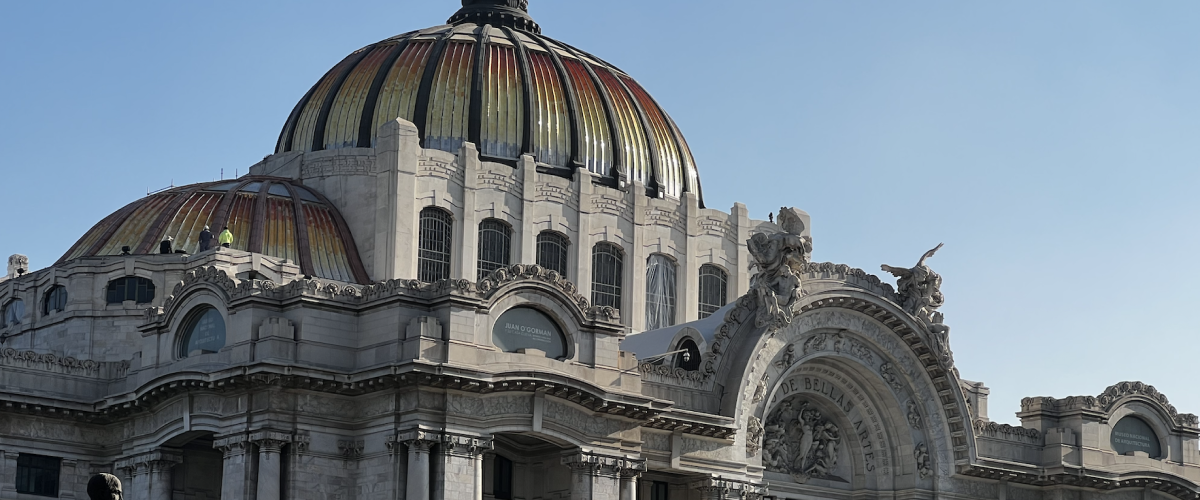
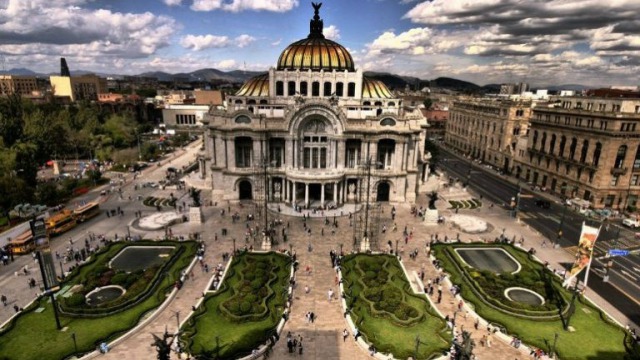
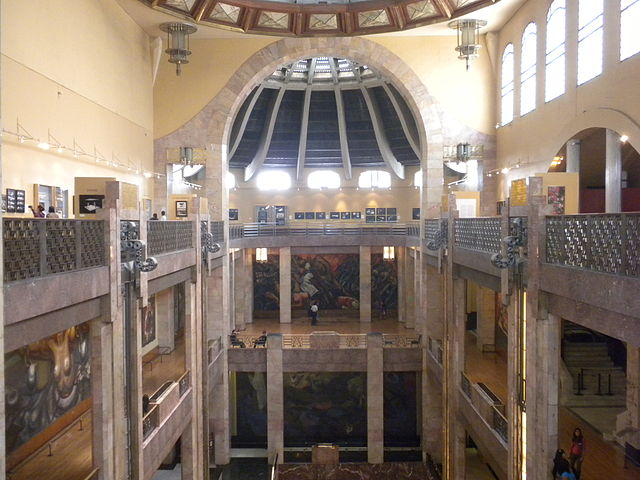

The Palacio de Bellas Artes is not just one of the most prominent buildings in the country. It’s also the major Fine Arts institution for the whole country and has been for decades. The Palacio is the headquarters of the Instituto Nacional de Bellas Artes y Literatura (INBAL). They’re in charge of coordinating artistic and cultural activities (through policy and education) for the country.
The Palacio is home to the National Theater company, the National Dance Company, the National Symphony Orchestra, the National Opera Company, the Ballet Folklórico de México, and the Fine Arts Chamber Orchestra. The main hall accommodates some 1,700 guests.
Most international visitors will visit for the Ballet Folklórico, not only because it’s language-free, but because it’s remarkable, emotionally approachable, and unique in the world. For more than 60 years, the troupe has presented traditional and regional dance from the entire republic. There’s more information on their website.
With a striking number of architectural styles, the Palacio de Bellas Arts is principally Art Nouveau on the outside and Art Deco on the inside. The exterior was designed by Adamo Boari, and begun in 1904. Over the 30 years of construction, during which a major war was fought (the Mexican Revolution 1910 – 1920) construction was interrupted numerous times. The façade, facing south to Avenida Juárez, is clad in white Carrera marble.
The main entrance houses sculptures by the Italian artist Leonardo Bistolfi. Multiple cherubs and similar sculptures represent music and inspiration. The plaza in front of the building, also designed by Boari, includes four Pegasus sculptures the Catalan artist Agustí Querol Subirats. The roof covering the center of the building is made of crystal designed by the Hungarian Géza Maróti and depicts the muses with Apollo. A “Pergola,” on the Alameda side of the site had been built to host gallery exhibitions, but this was demolished in 1973.
The interior of the building is primarily done in styles associated with Art Deco and was completed by Federico Mariscal. Also primarily surfaced in Carrera marble, the interior includes a main hall with adjoining smaller exhibition halls, the theatre and the Institute offices.
The main hall is covered by Maróti’s roof of iron and glass, and this can be seen from the ground floor. The main hall includes multiple works with pre-Hispanic motifs done in modernist and Art Deco styles. There are serpents’ heads on window arches and Chaac masks on the vertical light panels. Smaller exhibition halls are on the first and second floors. The first floor has murals by Rufino Tamayo. Two music recital halls are named for Adamo Boari and Manuel M. Ponce. The second floor has smaller exhibition halls and well-loved murals by José Clemente Orozco, David Alfaro Siqueiros, Diego Rivera, Jorge González Camarena, Roberto Montenegro and Manuel Rodríguez Lozano. The third floor is occupied by the Museum of Architecture. Ironwork on the third floor was designed in Italy by Alessandro Mazzucotelli and in Mexico by Luis Romero Soto.
At the theater entrance, bronze mascarons depict of Tlaloc, and Chaac, Aztec and Maya (respectively) deities of water. These were designed by Gianette Fiorenzo. The arch over the stage contains mythological personas like the Muses with Apollo. This was built in Hungary in the workshops of Géza Maróti. The most noteworthy part of the stage though is still the crystal curtain, a folding panel made of nearly a million pieces of iridescent colored glass made by Tiffany’s in New York. It remains unique in the world and weighs some 24 tons. The curtain design includes depictions of the Popocatépetl and Iztaccíhuatl volcanoes in the center. The surrounding landscape include images of sculptures from Yautepec and Oaxaca.
The complete agenda of musical and other events is always posted on the Bellas Artes website.
 Today's Bellas Artes Palace stands on one side of the central avenue. It stands on land where the convent of Santa Isabel stood during the colonial period. With the confiscation of ecclesiastical property in 1867, the convent was converted into private housing and the temple into a silk factory. By 1906, all construction on that block was demolished to build a National Theater. This was commissioned by President Porfirio Diaz and awarded to the Italian architect Adamo Boari. The project was to be a huge white marble palace in the Art Nouveau style.
By 1916 the exterior was finished and the domes were being built when Boari had to leave the country due to the instability of the Mexican Revolution. Between 1917 and 1929 the building did not see important advances. In 1930, the Mexican architect Federico Mariscal took charge of the project. He gave the interior an Art Deco style with elements inspired by the ancient past. The building was opened on Saturday, September 29, 1934 by President Abelardo L. Rodriguez, and the work Llamadas, sinfonía proletaria by Carlos Chavez was performed.
The fabulous opalescent glass curtain was designed by Harry Stoner. It depicts a view of the Iztaccihuatl and Popocatepetl volcanoes which could be seen from the National Palace at the beginning of the 20th century. The curtain was made in New York by the House of Louis C. Tiffany. In the ceiling soffit of the Concert Hall is a stained glass window designed by the Hungarian, Géza Maróti. The theme is Apollo and the Muses. The painters Diego Rivera, David Alfaro Siqueiros, José Clemente Orozco, Rufino Tamayo, and Jorge González Camarena all painted murals on the walls. Over time works by Roberto Montenegro and Manuel Rodríguez Lozano were also added.
Today's Bellas Artes Palace stands on one side of the central avenue. It stands on land where the convent of Santa Isabel stood during the colonial period. With the confiscation of ecclesiastical property in 1867, the convent was converted into private housing and the temple into a silk factory. By 1906, all construction on that block was demolished to build a National Theater. This was commissioned by President Porfirio Diaz and awarded to the Italian architect Adamo Boari. The project was to be a huge white marble palace in the Art Nouveau style.
By 1916 the exterior was finished and the domes were being built when Boari had to leave the country due to the instability of the Mexican Revolution. Between 1917 and 1929 the building did not see important advances. In 1930, the Mexican architect Federico Mariscal took charge of the project. He gave the interior an Art Deco style with elements inspired by the ancient past. The building was opened on Saturday, September 29, 1934 by President Abelardo L. Rodriguez, and the work Llamadas, sinfonía proletaria by Carlos Chavez was performed.
The fabulous opalescent glass curtain was designed by Harry Stoner. It depicts a view of the Iztaccihuatl and Popocatepetl volcanoes which could be seen from the National Palace at the beginning of the 20th century. The curtain was made in New York by the House of Louis C. Tiffany. In the ceiling soffit of the Concert Hall is a stained glass window designed by the Hungarian, Géza Maróti. The theme is Apollo and the Muses. The painters Diego Rivera, David Alfaro Siqueiros, José Clemente Orozco, Rufino Tamayo, and Jorge González Camarena all painted murals on the walls. Over time works by Roberto Montenegro and Manuel Rodríguez Lozano were also added.
Heart of México Walking Route: Alameda - Madero
< < Corpus Christi Temple | Torre Latinoamericana > >
Proyecto “Corredor de Cultura Digital”.
Nombre de la investigación: Investigación Centro Histórico, Monumentos, Edificios y Puntos de Interés (2023)
Dirección de investigación y diseño de Rutas: Acércate al Centro A.C. Guadalupe Gómez Collada
Coordinación e investigación histórica: Fideicomiso del Centro histórico Dir. Maestra Loredana Montes
 palaciodebellasartes@inba.gob.mx
palaciodebellasartes@inba.gob.mx
 (55)10 00 46 22
(55)10 00 46 22
 http://museopalaciodebellasartes.gob.mx/
http://museopalaciodebellasartes.gob.mx/
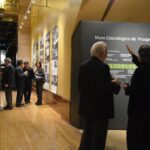
Nearest at 0.02 kms.
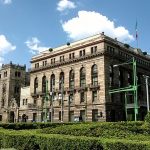
Nearest at 0.09 kms.

Nearest at 0.10 kms.

One of Mexico City's classic neighborhood markets and meeting places . . .

A giant neighborhood market brings the surrounding streets to life . . .

Practically the Public Market for the Mexico City Airport...
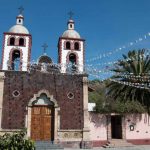
The neighborhood church of one of the oldest neighborhoods in the east of Mexico City...
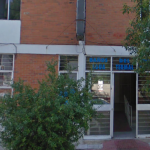
Mexico City's most famous and most medicinal public bathhouse...